Instinet Launches New Version of EMS
Instinet announced on Tuesday it has completed the global rollout of the latest release of its execution management system Newport. Dubbed Newport 3.10, the new release aims to simplify workflow and improve the way traders can access information.
Newport is a global, multi-asset, broker-neutral system that serves as the primary gateway for Instinet’s suite of electronic trading tools. Those tools include the Execution Experts algo suite and the Insight transaction cost analysis platform.

Key changes in the Newport 3.10 release include additional visualization tools, better integrated Complex Event Processing (CEP) technology, an extension of benchmarking capabilities and an enhanced blotter registration process.
“With this release, we took the analytical engine that our algorithms use, as well as some of the visualization tools that we have in our Insight analytics platform, and more tightly integrated them with the Newport front end,” said Tom Whelan, head of U.S. product sales for Instinet.
The new release also includes “Targeted Linking” functionality, allowing users to more easily link specific windows to better streamline workflow and ultimately place orders more efficiently.
“For the buyside, anytime you can let a decision be made in fewer clicks or through a more straightforward action, the better,” Whelan said.
Targeted Linking helps to keep traders focused on the right content, which is particularly important given the amount of content in an EMS these days, he added.
Frank Freitas, global head of product strategy at Instinet, said in a statement the company had worked in close collaboration with the user community in developing the enhancements to Newport.
Buybacks Continue to Climb
U.S. companies authorized $41 billion in stock buybacks last month, continuing a trend of using flush balance sheets to fund repurchase programs.
According to a report by Birinyi Associates, September brought the total amount of buyback authorizations up to $407 billion year-to-date. That represents a 48 percent increase over the authorizations made by that point last year.
Rob Leiphart, an analyst at Birinyi, said the buybacks were in response to the declining market.
"There have been a number of companies that have issued buyback programs specifically stating that they are authorizing the program because they believe their shares are undervalued," Leiphart said.
There were 94 new buyback announcements in September, including the first ever repurchase plan authorized by Berkshire Hathaway. The financial services sector has had the largest number of buyback authorizations this year.
September’s numbers put 2011 on track to having the third most authorizations of all time, trailing only 2006 and 2007.
Buyouts fell off in 2008 during the financial crisis and fell even further in 2009. While they recovered somewhat last year, 2011 has already surpassed the total amount in authorized buybacks for 2010.
Leiphart said that as companies recovered over 2010, they still did not hire workers, instead shoring up the cash on their balance sheets.
"That was coupled with the extreme volatility and the quick move down that we saw in the market," Leiphert said. "These companies are flush with cash and being run extremely efficiently, and they need something to do with that cash."
Bloomberg Expands Independent Research Offering
Independent research is taking on a bigger role at Bloomberg Tradebook. The agency brokerage has nearly doubled the number of “indie” research providers it offers to institutional clients.
Bloomberg began its research program in May with roughly 11 firms, and with recent additions, it now has 20 separate independent providers. The offerings are wide-ranging and include research that is fundamental, as well as industry-specific. Its research product covers about two-thirds of the companies in the S&P 500.
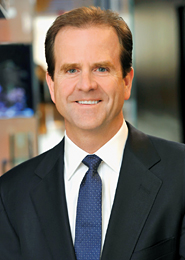
“Historically, the majority of Bloomberg Tradebook’s client base has been the trading desk,” said Ray Tierney, president and chief executive of Bloomberg Tradebook, “and what we’re trying to do is broaden our depth and reach by moving upstream to serve the portfolio manager and analyst by supporting an independent research offering.”
Tierney, a former Morgan Stanley brokerage exec, described the arrangements as “partnerships,” adding that Bloomberg has not taken equity stakes in any of the providers. The agreements are not exclusive, either.
Bloomberg has added a research sales team of six in the United States. Global sales is run by Richard Gould, a former Morgan Stanley veteran with a derivatives background. To date, other than the month of August, Tradebook has reached its “reasonable” sales goals for the research product.
Tierney stressed that success will depend upon delivering a “differentiated product” that clients want because it can generate them additional returns over their benchmarks. “Our goal is to drive growth and be innovative in delivering our research product,” Tierney said. “I want to avoid a ‘me too’ product because we want to give clients what they need, not just what we think they need.”
Indeed, commissions have been harder to come by for all brokerage firms over the last two years—particularly for agency brokers without research. Bloomberg’s move mirrors an industry-wide trend of agency brokers adding research to ensure their trading desks stay busy and maintain commission levels. Commissions fell in 2010 by 12 percent, according to Greenwich Associates, and that comes after a 13 percent slide the year before.
These have also been difficult times for independent research, as well. Integrity Research Associates, which helps money managers choose independent research, reports that spending on independents has been in a downward spiral for the last three years.
This year, Integrity reports that spending for independent research is expected to account for $1.47 billion—that’s down from $1.64 billion last year and $1.8 billion in 2009. On top of that, 2009’s spend was down 18 percent from the previous year. The good news is that decline is expected to “flatten” in 2012. Thereafter, spending should begin to climb “modestly” beginning in 2013, said Integrity president Sandy Bragg.
Things looked much rosier in 2006, when Integrity predicted that independent research would reach $2.5 billion by 2010. At the time, independent research was about a $1.8 billion business.
Bragg said that independent research lost traction as a result of the financial crisis. Also, the recent insider trading investigation placed heavy scrutiny on expert networks, which fall under the category of independent research. As a result, some managers have curtailed their use of this research due to compliance concerns.
Combine those reasons with a smaller commission spend, and independent providers were squeezed, particularly when money managers focused on paying their full-service brokers to stay in their good graces for corporate access, IPOs and secondaries.
Integrity Research tracks about 1,000 independent research firms, and between 300 and 400 do fundamental research, Bragg said. But there is an equally large segment that offers very specialized research—a group that has historically gotten little of its revenues from the buyside, he said.
He singled out John Burns Real Estate Consulting, a firm new to the Bloomberg research platform that has historically done business with home builders and mortgage lenders. “There are a lot of firms like that,” Bragg added.
Tierney’s expects Bloomberg’s research offering to grow to about 25 firms by the end of the year. He doubts the list of independent research providers will ever go beyond 30 firms. As far as additions and subtractions to the research list, he said that performance, client demand and what’s hot in the market will be the deciding factors.
How a client decides to pay for a “research subscription”—by check, CSA or trading through Bloomberg’s desk or algos—is up to the client, Tierney said. The length of time a client wants to purchase the service is also up to the customer, whether it is three months or longer, he added.
“We want to be as flexible as we can,” Tierney said, “because, after all, we’re trying to build a business.”
Part of building that business is keeping the independent research providers and the research salesmen in front of customers. Account executives are also encouraged to get appointments for them.
But Bloomberg’s distribution of its more than 300,000 terminals globally might be its biggest asset, and that was a major attraction for the independent firms to sign with the firm, Tierney said. Besides face-to-face meetings with clients, research providers will also be part of video broadcasts Bloomberg plans to host on its terminal. This video feature is also undergoing an expansion of bandwidth, which should give the picture higher resolution.
The video broadcasts potentially could be extended to corporate access, something Bloomberg is planning to offer clients during the first quarter of next year. It is in the process of signing up with an independent provider of that service, as well. Corporate access represents about 40 percent of the research commission spend, according to Greenwich Associates.
In the end, Bloomberg’s strategy is clear and revolves around research to keep the ubiquitous brand top of mind for clients. “No longer am I just relying on an execution-only model,” Tierney said. “The independent research offering provides a recurring revenue stream.”
Knight Uses Its Size to Thwart HFTs
Knight Capital Group has revamped technology used by its institutional customers to help them steer clear of high-frequency traders.
Because some HFTs are looking to take advantage of the information inherent in large institutional orders, Knight has rejiggered the technology supporting its Knight Direct execution management system to avoid imparting too much information.
Specifically, the large trading house has made changes to the way Knight Direct uses the underlying "Find and Nail," or FAN, smart order router, by incorporating technology it calls "Order Awareness."
Rather than spray 30 or 40 venues in search of liquidity, the upgrade allows the EMS to tap liquidity at only a few venues, said Knight managing director Joe Wald. It does that by monitoring the performance of other similar orders it has worked.
"We’ve changed the way smart order routing works," Wald told Traders Magazine. "If you spray 40 different destinations at the same time, then short-term alpha traders see that and you incur market impact."
The solution for Knight has been to leverage its large market presence. Because it is continually probing both lit and dark pools for liquidity, it builds up a knowledge bank that can be tapped for subsequent orders.
If FAN discovers that a certain venue is ideal for a given security, it will send all subsequent orders in that name there. It won’t bother to strafe multiple venues-a strategy that could alert market makers and other traders of its intentions, Wald said.
Knight is one of the largest trading houses on Wall Street, routinely placing in the top 10 firms, according to data provided by NYSE Euronext and Nasdaq OMX Group.
Nasdaq To Buy Back Shares
Nasdaq OMX Group announced Wednesday its board of directors has approved a share repurchase program of up to $300 million, getting the exchange company in on the stock buyback trend that has been sweeping corporate America.
The Nasdaq repurchases will be funded from existing cash balances. The program does not obligate the company to acquire any particular amount of stock, and the share repurchases may be suspended or discontinued at any time.
"This share repurchase authorization reflects our previously stated commitment to return excess capital to our shareholders," said Lee Shavel, Nasdaq’s chief financial officer. "We expect to continue to deliver strong returns to shareholders."
Last month, Berkshire Hathaway announced it would engage in its own buyback plan, a first for the investment company. Exxon Mobil, Hewlett-Packard, IBM, JP Morgan Chase and ConocoPhillips have all spent billions on share buybacks in recent months.
Buybacks have been on the rise since 2010. Last year, stock buybacks by S&P 500 companies increased 117 percent to $299 billion, up from $138 billion in 2009.
Nasdaq said it will also be paying down its debt, making a $109 million debt prepayment in fourth quarter in addition to its $11 million mandatory quarterly payment.
New NYSE Front-Running Rules Alarm Buyside
Recent rule changes by the exchanges operated by NYSE Euronext have some on the buyside worried about front-running by their brokers.
In September, the New York Stock Exchange, NYSE Amex, and NYSE Arca all changed their rules that prohibit trading ahead, or front-running, to mirror those of the Financial Industry Regulatory Authority. In so doing, it watered down a key protection for large institutional customers.
The crux of the change is a reversal of the assumptions that underpin the understanding between the sellside and the buyside regarding trading alongside, or ahead.
Rule 92, as both the NYSE and Amex rules were called, barred trading ahead except in the case of block orders. The exception allowed brokers to trade alongside or ahead of their customers, but only if the buyside gave them permission to do so.
The exchanges’ new Rule 5320, by contrast, allows brokers to trade alongside their customers without asking for permission. Brokers only need to send out "negative consent" letters to their customers once a year, informing them that they intend to trade alongside, unless instructed otherwise.
In other words, the buyside trader must "opt in" to the protections provided by Rule 5320 by raising the issue with their brokers each time they trade. They no longer have the luxury of "opting out" of the protections of Rule 92 when prompted by the broker.
The change shifts the compliance burden from the sellside to the buyside.
"This is very significant," one buyside trader, who requested anonymity, said. "The broker-dealers are claiming this is just a minor rule change, but it certainly is not. This rule says they can trade beside me or ahead of me anytime they want to."
The concern arises when a buyside trader asks his broker to commit capital for part of an order. If the broker does so, he takes on a position and puts himself in competition with the customer. He must trade stock on behalf of the customer as well as his own account as he seeks to flatten his position.
The fear is that the broker will trade for his own account at prices better than those he obtains for his customer. That’s a form of front-running, or trading ahead. Both FINRA and the NYSE have had similar rules prohibiting this for years. In a bid to ease the compliance burden of the sellside, the two organizations have been "harmonizing" their rulebooks in recent years.
FINRA won Securities and Exchange Commission approval for an updated version of its two "Manning" rules earlier this year. It created Rule 5320. NYSE Euronext won SEC approval for its lookalike Rule 5320s in August. The exchange operator received no pushback from money managers or their Washington-based advocate, the Investment Company Institute, at the time. The rules went into effect in September.
NYSE filed the rule with the SEC for "immediate effectiveness," meaning there was no comment period. This is common for non-controversial rule changes. Buysiders who spoke with Traders Magazine were adamant that a comment period should have been part of the process. They also contend they did not receive proper notification of the proposed change. Whether or not some party will petition the SEC to remand the rule remains to be seen, one source said.
Despite the purported surprise by the buyside at the sudden change, NYSE Euronext’s August rule filing was not its first public pronouncement on the subject. In March 2009, the exchange operator sent a memo to its members asking for comment on the possibility of swapping Rule 92 for Manning.
In response, the Securities Industry & Financial Markets Association sent a letter to NYSE declaring its approval for any rule change, noting that compliance with the existing rule was a burden on traders and caused "unnecessary delays in the trading process." Also, at the time, one senior NYSE Regulation official said publicly that it might not be a bad idea for the buyside to do its own policing.
NYSE Euronext declined to comment for this article.
The new NYSE rule does allow the buyside to opt into the protections afforded by the rule. But, in practice, the value of that opt-in may depend on the brokerage.
And at least one broker is taking a hard line. Citi sent a letter to its customers telling them it would only offer share-by-share protection for held orders. "Citi will consider such requests on a case-by-case basis," the letter said. "It will inform the customer whether it is willing to accept such a protected order." Traders Magazine received excerpts of the letter by a recipient.
Citi told its customers it would not offer share-by-share protection for not-held orders. "Because not-held orders require that the firm exercises discretion as to time and price of execution, Citi does not believe it is feasible for these orders to be eligible for share-by-share protection," the letter said. Citi declined to comment.
Not-held orders are those in which the broker has discretion in the handling of the order. Held orders require the broker to follow its customers’ instructions to the letter.
Most institutional trading is done on a not-held basis. Many buyside traders do not use held orders because they involve the display of limit orders on the exchanges. That may signal the trader’s intentions.
A number of brokers have sent out letters to their clients and/or posted their policies on their Web sites. Not all policies are as restrictive as Citi’s. UBS and Goldman Sachs, according to one source, appear more willing to accommodate the buyside.
Cover Story Part 2: The Big Impact
The importance of exchange-traded funds is growing as ETF assets continue to soar. Bank of New York Mellon has predicted that ETF assets will double to $2 trillion by the end of 2015. Others, including consulting firm McKinsey & Co., think assets could go even higher by then, topping $4 trillion.
According to Onur Erzan, a partner at McKinsey, ETF assets will rise to between $3.1 trillion and $4.7 trillion by 2015, with the growth coming from both retail and institutional investors. As many investors use ETFs as a substitute for individual stocks, there could be a boost in overall volumes, since trades in ETFs can trigger a second set of trades in their underlying securities, he added.
"If someone is to buy an ETF, they’re buying exposure to what’s in that ETF," said Chris Hempstead, head of ETF trading at Cowen Group. "The exposure doesn’t come from nowhere. Someone does need to trade the names that are in it."
Hempstead said the success of ETFs in past years indicates a greater percentage of new money coming into the market will likely flow into ETFs as opposed to mutual funds or single stocks. He sees ETFs continuing to gain market share in the future.
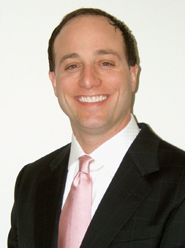
Mark Esposito, chief executive officer of Dallas-based Esposito Securities, said he could see ETF assets topping $4 trillion even sooner than 2015. He notes a lot of bigger money managers have gotten into the ETF game as investor appetite has increased. Ultimately, however, the shift to passive ETF investing could hurt research shops.
"If they’re writing research on individual stocks, but everyone’s buying baskets, who cares?" said Esposito. "Unless it’s an active strategy, they’re not going to buy or sell an individual name based on research."
Of course that doesn’t mean research is going to go away. It just means we could be entering a period where the demand for research won’t be as high as it once was.
Ken Marschner, head of U.S. quantitative trading for UBS, said the shift towards passively managed investments reflects the fact that markets have gotten more efficient. If too many investors adopted passive strategies, it would create new inefficiencies, attracting money back to active management.
"There’s always a market for research and trying to generate alpha," Marschner said. "The reality is, if things shifted too far, and everybody was trading in passively managed instruments, it actually would make the bar lower in order to generate alpha."
Though indexes have to be rebalanced, the turnover in a passive ETF is a lot lower than for a normal managed strategy, so ETF growth could have a negative impact on volumes if it takes market share away from mutual funds. However, some of that volume could be made up for by the create-or-redeem process through which underlying securities get packaged into ETFs or ETFs get turned back into their underlying securities.
The business of creating and redeeming ETFs is performed by authorized participants who make sure the fund continues to track its underlying index. If demand for SPY, for instance, outpaces a rise in the S&P 500, APs will buy the underlying stocks and sell SPY. If demand for the ETF drops, they will do the opposite.
But what sounds like a simple business can actually be quite complex. For instance, APs can create millions of dollars worth of fund shares through in-kind transactions in which a trade never actually hits an exchange.
"There are not a lot of people that are APs," Esposito said. "It’s very complicated for people to understand it, and even more complicated to trade it."
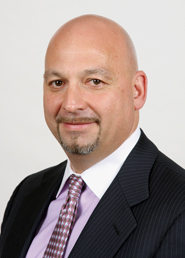
Joseph Cangemi, chairman of the Security Traders Association and head of equity sales and trading for BNY ConvergEx Group’s global electronic trading unit, agreed. He called APs the most sophisticated trading pieces of the ETF puzzle.
"From a standpoint of a single-stock trader transitioning into a viable part of the AP desk, the skill set has to be a lot more sophisticated than a single-stock broker," Cangemi said.
Due to the nature of their business, APs often have to take on a lot of balance-sheet risk, as well. Esposito said many large firms have gotten into the AP business due to client demand, but some of them would rather not be there at all. As ETFs become more important, however, firms that are pro-active about their AP businesses could be rewarded.
Marschner said the primary reason UBS became an AP was because it needed to provide the best pricing for its institutional clients. Secondarily, though, it found the market-making business of an AP can be lucrative as well.
Cangemi was also sunny on the outlook for APs. He said the AP unit was one of the fastest growing businesses at ConvergEx.
The new generation
ETFs launched today are looking less and less like the index funds of the past, according to Adam Gould, senior vice president for business development at DirexionShares.
"The plain vanilla passive indexing ETF market seems to have matured or is in the process of maturing," Gould said. "A lot of the products that I see coming to market now are commodity offerings that weren’t out there before, various fixed income offerings that weren’t out there, some volatility strategies and other actively managed ETFs, so it seems to be a different kind of ETF that’s launching now."
Greg Friedman, who spent years developing funds for iShares and recently became managing director of products for Russell’s ETF business, said that as ETFs have evolved, hedge funds have tended to be the early adopters of new products.
"They were huge adopters of fixed-income and commodities ETFs, because in the past they couldn’t get access to those markets cheaply and effectively," Friedman said. "It was an easy way for them to get in and out-to get the exposure intraday."
A recent study by Goldman Sachs found that hedge funds currently hold $125 billion in gross exposure to ETFs.
About 80 percent of hedge funds’ ETF positions are short, the report found. The study’s authors said the short bias in ETFs came because fund managers tend to use ETFs for hedging, not because they are taking directional bets on the markets.
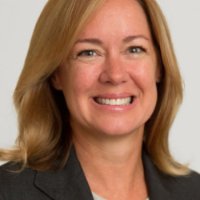
Laura Morrison, head of U.S. exchange traded products for NYSE Euronext, said hedge funds are a major driver of innovation in ETFs, frequently giving issuers their ideas about what new funds to launch.
"Hedge funds continue to be more and more active, and in the ETF space, issuers are paying close attention to what they have to say," Morrison said.
Briton Ryan, head of U.S. ETF sales and trading for Newedge, said ETFs are no replacement for old-fashioned stock picking, but they do give investors more tools, which he sees as a good thing. Pension funds, for instance, might not have the resources to research and invest in certain commodities or foreign securities, but an ETF can still provide exposure to those asset classes.
"A lot of portfolio managers maybe didn’t want to invest in ETFs, but as the ETF space has grown and their competitors are outperforming using ETFs, they feel they need to get involved," Ryan said.
ETFs offer complex ways to trade for clients that traditionally had far fewer options. Bill Smalley, vice president for exchange-traded funds at Factor Advisors, said that only a few years ago it was difficult to invest in something like gold, which is today widely held.
"There’s no question that ETFs have opened up asset classes to the masses that previously were difficult to own and to manage," Smalley said.
As more firms get in on the ETF game, however, margins have gotten thinner, according to Bob Tull, chief operating officer for Factor Advisors. He said the big, established desks are seeing aggressive new competitors.
Tull said some of these new, leaner firms have three to five guys doing the same thing that 20 traders on the ETF desk at a larger firm used to do.
Though relatively small, this new breed of ETF trading desks can have tremendous influence. That’s because they are interconnected to nearly every asset class there is. Tull said an ETF desk has tentacles that reach across the firm.
"It’s getting input from the foreign exchange guys, from the bond guys, from the international equity traders, from the derivative trading equity desks, the options guys," Tull said. "They’re becoming much more an expanded entity than the old silo trading desks."
Smalley said a lot of the trading desks he deals with are very much cross-functional. ETF traders are now neither equities traders nor traders of other asset classes. Instead, they are now simply market traders, he said.
Cover Story Part 1: The Big Impact
Kweku Adoboli, the alleged “rogue trader” at UBS who was arrested in London after supposedly losing $2 billion, has put renewed interest in the desks that handle exchange-traded funds.
From zero to $1 trillion in assets. That’s how much ETFs have grown in 18 years–and this could just be the beginning. Experts predict the next few years could see even more explosive growth in ETFs, having an enormous impact on the entire trading industry.
Earlier this year, ETFs made up between 25 percent and 30 percent of total market volume, but as trading heated up this summer, they rose to as high as 40 percent of volume for some days. That has made the industry pay new attention to these instruments.
“Everyone is looking to support ETFs because they are 40 percent of trading volume,” said Dan McCabe, chief executive officer of Precidian Investments, which specializes in developing ETFs and mutual funds.
When the first ETFs were launched 18 years ago, they were handled by former options traders who had to cut their teeth on the floor of the American Stock Exchange. Expertise in portfolio pricing, portfolio management and indexing are important for trading ETFs, which is why many people who trade them today have a background in index arbitrage.
Traditionally, single-stock traders have rarely gotten involved with ETFs, but with these teenaged instruments finally coming of age and taking their place as a dominant part of the industry, all traders are going to have to get schooled in ETFs.
There are now 1,300 exchange-traded products available, offering exposure to not just equities but commodities, currencies, futures, fixed-income and other asset classes. And more options are coming.

“With an ETF, you can now gain access to pretty much any asset class you need,” said Dan Segal, who leads the ETF arbitrage business at Cantor Fitzgerald & Co. “We have to adapt, and we have to get more complex along with them.”
According to recent data from Birinyi Associates, the top 10 ETFs by trading volume each month now track not just U.S. stocks, but also emerging markets equities, commodities, even the VIX volatility index.
Some of the biggest growth in ETFs has been from funds that track non-stock indexes, and Segal points out that GLD, which tracks gold, recently had more assets than SPY, which tracks the S&P 500. After market turmoil calmed down a bit, GLD’s assets receded and SPY shot back up to its number one slot.
As there are more and more ETFs trading non-equities, it brings up the question of who gets to trade the ETF. Briton Ryan, head of U.S. ETF sales and trading for Newedge, said while equity desks have traditionally had authority over ETFs, the vehicles can also be traded by those with the most knowledge of their underlying assets, whether commodities, bonds, or something else.
Coming Together
Rather then sparking turf wars, though, ETFs tend to bring different sides of a firm together, even though an equities trader and a commodities or bond trader might normally have little reason to collaborate.
“Generally speaking, it’s an opportunity for both groups to work together,” Ryan said. “If you have the right management at your firm, they should be working to utilize the two specialties together to put out a better product to their customers.”
For instance, if a large institutional investor wants to shift assets into GLD to gain exposure to gold, it could push up the price of the ETF. By utilizing the expertise of a commodities desk, however, a firm could instead trade gold futures or bullion and then create an equivalent product for the client at a lower price, according to Ryan.
And institutional investors are increasingly turning to ETFs. In a recent Greenwich Associates survey, nearly half of asset managers and 32 percent of pensions, endowments and foundations said they planned to increase their allocations to ETFs over the next two years
One of the biggest changes brought by the ETF revolution has been the rise of ETF-specific desks, with traders dedicated not to stocks or bonds or commodities, but to trading a multitude of exchange-traded products.
“A specialized ETF trading desk has evolved at a lot of the firms with whom we work,” said Kevin Quigg, head of ETF global capital markets at State Street Global Advisors.
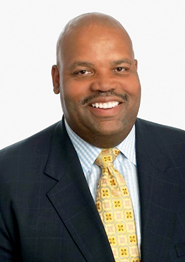
Those sentiments were echoed by Reggie Browne, managing director of the ETF team at Knight Equity Markets. Browne has been trading ETFs since the mid-1990s, and he said the trend is toward ETF-focused desks with ETF-specific traders. At Knight, retail flow still doesn’t go through the ETF desk, but all institutional orders do.
Browne said traders who just focus on U.S. cash equities are going to have to broaden their horizons if they value their careers-learning more about fixed-income, commodities, international stocks and foreign exchange. The days of the simple American stock trader are dwindling.
“The demand for services by those people is decreasing, and for someone to be competitive, they’re changing their skill sets,” Browne said. “Demand shifts, and people look at new opportunities. They’re adapting themselves into other types of trading businesses. Fortunately, ETFs still land a career path for traders.”
ETF traders generally need computer modeling skills so they can model the behavior of a basket of holdings. While computing skills are important, however, they do not outweigh the need to understand the traditional basics of trading.
For instance, Abe Kohen, director of trading strategies at FlexTrade, has both an MBA in finance and a master’s degree in computer science. To him, both are important.
“It’s the combination of the two of them that allows me to truly understand the instruments that we’re trading and how to get the best electronic execution,” Kohen said.
Trading ETFs necessarily requires more of a quantitative or mathematical background than just trading single stocks. David Silber, head of equity derivatives at Jefferies & Co., said that’s because ETF traders need to have an understanding of how various stocks move together as a basket and relative to one another.
“Before, if you knew your stocks really well, that was good enough,” said Silber. “Now it has to be more of not only knowing your stocks, but how they behave in a correlated manner.”
Learning the Ropes
Fortunately, the learning curve does not seem to be as steep as it was for traders a decade ago. Silber said that in the last seven years or so traders have become more sophisticated, in part due to concerted efforts by the industry for education.
Jefferies strives to continually educate its traders about everything that’s changing in the marketplace. Because ETFs have changed so much in recent years, Silber said about 20 percent of the firm’s educational efforts are now aimed at ETFs.
And education isn’t just necessary for traders on ETF-specific desks. All traders have to learn at least something about what has become clearly one of the hottest trading vehicles around. ETFs have become so pervasive that they affect every institutional trading desk, according to Ken Marschner, head of U.S. quantitative trading for UBS.
While UBS does have ETF market-making desks, all of the financial giant’s traders are expected to be well versed in the world of ETFs.
“Pretty much all of our desks trade ETFs in different capacities,” Marschner said. “Many different types of traders and desks have a use for these products.”

The level of expertise a trader needs on ETFs can vary. Andy McOrmond, managing director of the ETF desk at WallachBeth Capital, said traditional SPDRs don’t really trade much differently than traditional cash equities. The problem is second- and third-tier funds can act drastically differently, in part because liquidity can be more of an issue for ETFs.
According to McOrmond, an ETF that trades less than 2 million shares a day needs to be treated differently than an equity that trades less than 2 million shares a day. That’s because the makeup of market participants is so different.
“Arbitrageurs are not always inclined to post their best bids and offers on the screen,” said McOrmond. “An equities trader needs to understand that there’s probably always a better price on an ETF than he’s traditionally seeing. He just has to find the right sources to go get it.”
For McOrmond, the secret is a combination of learning what the ETFs are worth and who the proper players are in providing the liquidity. For more lightly traded ETFs, filling an order at the best price might then have to be done the old-fashioned way-with a phone call rather than a click of a mouse.
For these second- and third-tier names, trading desks might be strong in some areas but not in others. ETFs cut across a wide number of asset classes, and it can be impossible to find a desk that will give you the best price in fixed-income, commodities, international equities, currencies and everything else.
“There are so many different asset classes now,” said McOrmond. “It’s very hard to put together a shop of professional traders that are good in every single asset class.”
In order to trade ETFs beyond the top hundred or so names, a firm needs to be able to go to different sources to get liquidity. But that takes much manpower and brainpower, especially when it comes to products a desk might only trade occasionally.
That’s why shops like WallachBeth have emerged as go-between firms for certain lightly traded ETFs. They act as a sort of broker’s broker, connecting other trading desks with liquidity at prices they might not normally be able to find.
“Traders have to do a good job on every single order, so they can’t drop the ball on an ETF order,” McOrmond said. “That’s where ETF specialty shops like us come in.”
To Be Continued on Monday, October 10, 2011


















Commentary: Visual Mindbombs
Zombies on stilts eating money. Garbage bags sealed with neckties. Drums and guitars and dramatic mass arrests. The protests known as Occupy Wall Street have been great performance art, but will they change the political equation?
The protesters’ Web site boldly claims, "We are using the revolutionary Arab Spring tactic to achieve our demands," which certainly sounds serious. Most Wall Street pundits have dismissed them based on their insipid interviews and lack of actual demands. At first look, I agreed-after thoroughly surfing their Web site, the only demand I could find was for pizza. There is a section marked "Donate to us," where you can enter your credit card number and click to send them a pie (non-meat options preferred). Aristotle said that hunger is the father of revolution, but for this rebellion, the reverse appeared to be true.
Beyond free pizza, I wondered whether there was a deeper motivation behind all the noise, and so I began to do some research. The London Telegraph thought there wasn’t much more to it, calling Occupy Wall Street "little more than a fashion show masquerading as a political movement, a gathering of super-cool yoof who want to show off how hopping mad they are about bankers and war and pollution and stuff…" Not understanding what a "yoof" is, I switched to American sources and continued reading.
The revolution was launched in July by a Canadian leftist magazine called Adbusters, which proclaims a mission of "cutting through the fog of mental pollution with incisive philosophical thrusts and visual mindbombs." Within Adbusters, the idea for the revolution has been attributed to a 69-year-old aesthete named Kalle Lasn, author of the 2006 coffee-table book "Design Anarchy." His first visual mindbomb dropped on New York was a beautiful poster of a ballerina balanced on the famous Wall Street Bull statue, with text above her reading, "What is our one demand?" The poster directed people to a Twitter page, which explained that the one demand would be chosen at a "General Assembly" in New York. After the civil disobedience group Anonymous tweeted the poster, it quickly went viral, resulting in all the yoof hanging out in the park a month or so later.
But a month into the protests, I still could not find out what their one demand was. Mr. Lasn, the father of the revolution, has stated in interviews that he believes a financial transaction tax could be The One, but due to the anarchist nature of the movement he created, he has a limited ability to pull strings. And so I decided to go straight to the heart of it all and sit in on a General Assembly in Zuccotti Park. After listening to quite a few rambling speakers, surrounded by a few dozen bored attendees who were only half-listening, I think it’s quite unlikely that Occupy Wall Street will ever settle on the one demand, or for that matter decide much of anything.
And so we have something interesting that’s evolved: Occupy Wall Street has become the protest equivalent of a very valuable corporate shell company. They have substantial assets: Thousands of employees working for free. Celebrity spokespeople. Web sites that receive millions of hits. Franchises popping up in Boston, San Francisco and hundreds of other locations throughout the country. Media exposure and a growing brand awareness that would make a marketing executive drool. Occupy Wall Street Inc. (eventual ticker: OWS) has everything in place to package, market and distribute a product. Now there is only one thing preventing them from making massive sales to the American public: They don’t know what they are selling.
Any junior-level M&A banker worth his weight in cuff links knows how to create value in this situation-you marry the powerful brand with some under-marketed products. And that is what we’re starting to see happen. Unions are showing up at OWS marches, trying to convince the media that what the protesters really want is for the Government Workers 709 to get better dental coverage. Members of Congress are coming out of the woodwork to "sympathize" with the protesters, saying that what the kids really want is another stimulus plan. Even the Iranian Foreign Ministry tried to jump in on the OWS brand, issuing a statement condemning "the crackdown on the protesters of the Occupy Wall Street movement" on the Brooklyn Bridge and demanding a human rights investigation.
Iran aside, the pronounced piling-on causes real risk to Wall Street. As long as the group’s message remains a blank canvas on which to paint, anyone with a gripe about anything will seek to attach themselves to OWS’s growing brand, and then every gripe becomes rebranded as an anti-Wall Street gripe.
Filmmaker Michael Moore said in an interview with Keith Olbermann that he envisioned OWS would next spread to college campuses, which he thought were ripe for anti-Wall Street protests due to the crushing student loans many kids graduate with today, which he blamed on Wall Street greed. I couldn’t fathom the mechanism for how Wall Street could have been responsible for the college tuition increases of the past decades-did brokers charge too much when executing trades for college endowment funds? Is that what drove up tuition 500 percent in the last 20 years? But identifying the underlying cause of college tuition increases is irrelevant. Tents will pop up on quads, anti-Wall Street signs will be written, and the general public will see the protests and come away with a vague sense that Wall Street has something to do with high tuition.
The New York Times wrote in a recent editorial that the "chattering classes" should stop "complaining that the marchers lack a clear message and specific policy prescriptions." The writers then outlined four policy demands of which they were confident would "address the grievances of the protesters." It’s a smart marketing move-no one gets excited when the New York Times opinion page calls for more progressive taxation for the umpteenth time. But if they can attach it to the OWS brand, it suddenly seems fresh and relevant.
Look for many more groups to claim they are speaking for the protesters and try to co-opt their brand. The irony is that for the protesters, losing control of their message is actually a good thing. If they choose a few crazy policy demands, they will almost certainly achieve nothing. But by focusing on what they’ve proven to be great at-namely branding, imagery and recruitment-and then leaving the policy demands to whoever latches onto their brand, OWS may give a considerable boost to a large number of "progressive" issues.
So while the protesters may not have any demands themselves, don’t write them off. They may not have a realistic policy agenda, or any agenda beyond hanging out and eating free pizza. But they have created a brand and captured America’s attention, and the "visual mindbomb" they represent will change the political equation.
Dan Mathisson, a Managing Director and the Head of Electronic and Program Trading at Credit Suisse, is a columnist for Traders Magazine. The opinions expressed in this column are his own, and do not necessarily represent the opinions of the Credit Suisse Group or Traders Magazine.